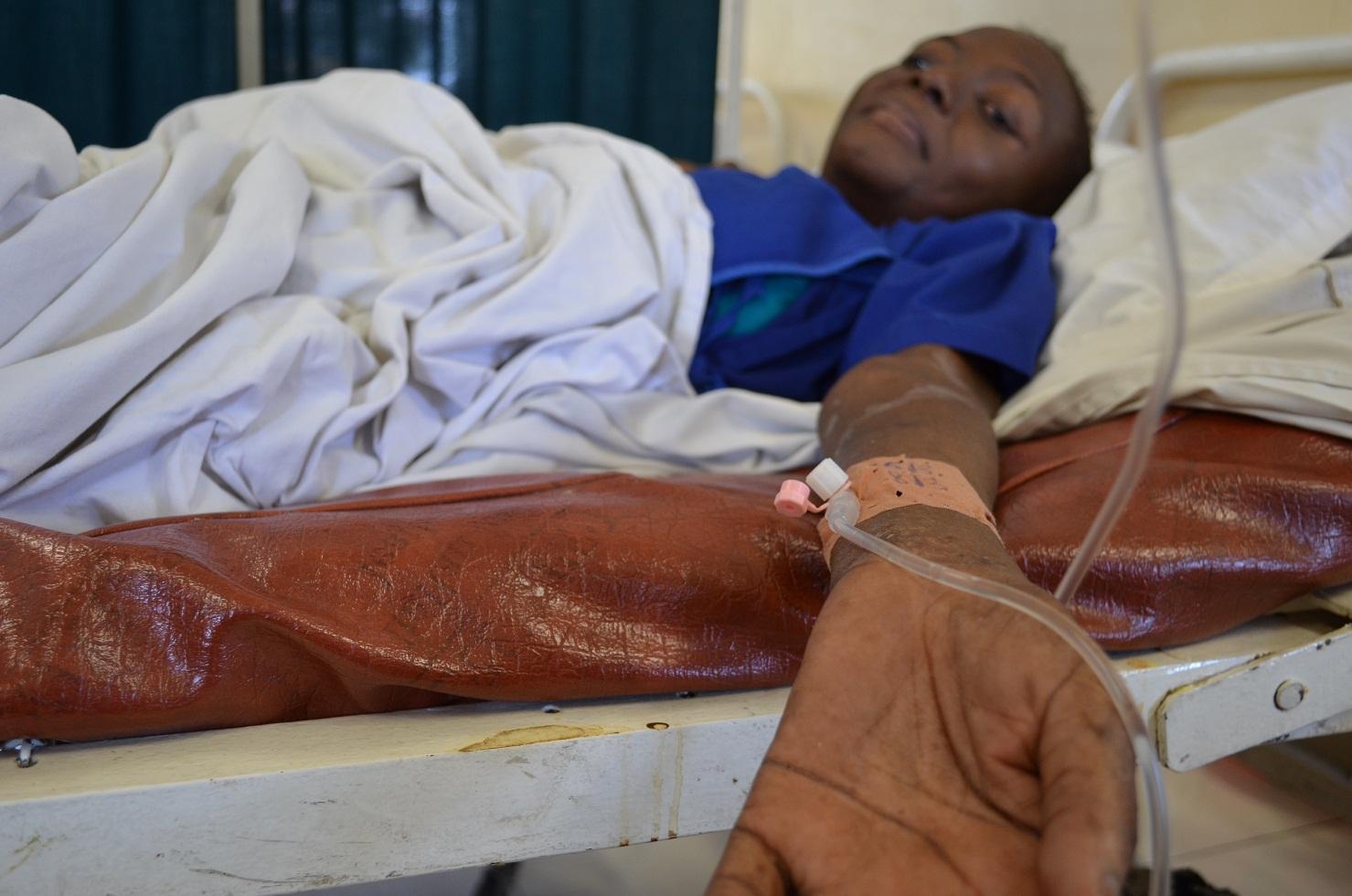
What is the best thing to drink when having COVID-19?
“You should be hydrated enough so that your urine is almost clear,” says Dr. Yu. If you have diarrhea or if you're sweating from a fever or chills, make sure you have salt or a little sugar in your fluids—think broths, fresh juices or electrolyte solutions like Gatorade—because salt and sugar can help you retain water.
What is the typical time to recover from COVID-19?
Early research suggested that it could take 2 weeks for your body to get over a mild illness, or up to 6 weeks for severe or critical cases. Newer data show that recovery varies for different people, depending on things like your age and overall health.
Which organ system is most often affected by COVID-19?
COVID-19 is a disease caused by SARS-CoV-2 that can trigger what doctors call a respiratory tract infection. It can affect your upper respiratory tract (sinuses, nose, and throat) or lower respiratory tract (windpipe and lungs).
Can COVID-19 give you pneunomia?
You're likely familiar with the common, mild symptoms of COVID-19 — including fever, dry cough and fatigue. But, in more severe cases, COVID-19 can also cause serious complications, including pneumonia.
Can COVID-19 still be contagious after 5 days?
If after five days you are fever-free for 24 hours without the use of medication, and your symptoms are improving, or you never had symptoms, you may end isolation. But if you're still getting a positive test after six to 10 days, Arwady said you could still be contagious.
How can I speed up the healing time of the COVID-19?
Some of the things you can do to speed your healing are similar to how you might take care of the flu or a bad cold. Eat healthy foods. If you feel like eating, fuel your body with the vitamins and nutrients it needs to get better. Limit sugary or highly processed foods like cookies and sodas.
What organs could be affected by the long term effects of a severe COVID-19 disease?
People who had severe illness with COVID-19 might experience organ damage affecting the heart, kidneys, skin and brain. Inflammation and problems with the immune system can also happen. It isnt clear how long these effects might last.
Can the COVID-19 virus affect your kidneys?
Does COVID-19 affect the kidneys? It can. In addition to attacking the lungs, the coronavirus that causes COVID-19 — officially called SARS-CoV-2 — also can cause severe and lasting harm in other organs, including the heart and kidneys.
How does COVID-19 affect the heart and lungs?
SARS-CoV-2, the virus that causes COVID-19, most commonly affects the lungs but It can also lead to serious heart problems. Lung damage caused by the virus prevents oxygen from reaching the heart muscle, which in turn damages the heart tissue and prevents it from getting oxygen to other tissues.
Can pneumonia develop with COVID-19?
COVID pneumonia—when the two diseases merge—often may be to blame. The coronavirus tends to attack airways—leading to coughing, low-grade fever and other minor miseries akin to those of the flu. But for about one in five unlucky people, the virus causes pneumonia—and can be life-threatening.
Can COVID-19 cause bilateral interstitial pneumonia?
Bilateral interstitial pneumonia is a serious infection that can inflame and scar your lungs. It's one of many types of interstitial lung diseases, which affect the tissue around the tiny air sacs in your lungs. You can get this type of pneumonia as a result of COVID-19.
Can COVID-19 affect the testicles?
"A significant percentage of men will experience testicular swelling or swelling of the epididymis after symptomatic COVID-19 infection," says Dr. Deibert. A recent review of male reproductive health estimates that "10% to 22% of men with acute COVID-19 infection develop orchitis or epididymo-orchitis.
Is it normal for COVID-19 symptoms to last more than 10 days?
People with post-COVID conditions can have a wide range of symptoms that can last more than four weeks or even months after infection. Sometimes the symptoms can even go away or come back again.
How long does it usually take to get over mild COVID-19 symptoms?
For most people who get COVID-19, symptoms get better within a few weeks. But some people, especially those who got sick enough to need to go to the hospital, continue to have symptoms for longer. These can be mild or more serious.
How long do body aches and muscle pains last from COVID-19?
Body aches or muscle pains may be an early symptom of COVID-19, often appearing at the very start of the illness and lasting for an average of 2-3 days. Unfortunately, COVID-19 body aches can sometimes last much longer and are commonly reported in people with long COVID-19 or post COVID-19 syndrome.
How long can fatigue last after COVID-19 infection?
Fatigue usually lasts for 2-3 weeks after COVID-19 infection, although some people may experience fatigue for 12 weeks or more after the infection is gone.
How to contact homeless veterans?from usa.gov
Call the National Call Center for Homeless Veterans hotline at 1-877-4AID-VET (1-877-424-3838).
How to protect yourself from Delta variant?from cdc.gov
To maximize protection from the Delta variant and prevent possibly spreading it to others, get vaccinated as soon as you can and wear a mask indoors in public if you are in an area of substantial or high transmission.
What is a CTC credit?from usa.gov
By claiming the Child Tax Credit (CTC), you can reduce the amount of money you owe on your federal taxes. The amount of credit you receive is based on your income and number of qualifying children you are claiming.
When will the CTC be extended?from usa.gov
The CTC was expanded under the American Rescue Plan Act (ARPA) of 2021 for tax year 2021 only. If you are eligible, you will begin receiving advance Child Tax Credit payments on July 15. The payments will continue monthly through December 2021. Under ARPA, families are eligible to receive:
Can you use the form as it is presented here?from health.gov.au
You can use the form as it is presented here or adapt the content for your unique requirements.
Does the gig worker tax relief keep coming?from debt.org
Relief also will keep coming for gig workers and others not traditionally eligible for aid. Additionally, the plan waives income taxes on the first $10,200 in unemployment payments ($20,400 for married couples) for those made less than $150,000 in adjusted gross income in 2020.
How to contact homeless veterans?from usa.gov
Call the National Call Center for Homeless Veterans hotline at 1-877-4AID-VET (1-877-424-3838).
What is TANF in Colorado?from benefits.gov
The Colorado Works-Temporary Assistance for Needy Families (TANF) program is designed to help needy families achieve self-sufficiency. States receive grants to design and operate programs that accomplish one of the purposes of the TANF program. The...
What are the Available Programs that Provide Financial Assistance?from financialgrants.org
Various programs provide financial assistance for eligible individuals throughout the United States. Some of these programs focus on housing, education, employment, and other needed assistance.
What to do if you don't get a debt relief grant?from sapling.com
If for some reason you do not receive a debt relief grant, don't despair—there are programs that can help you get your debt down to a reasonable level. Many companies offer assistance and advice, but be very choosy. Consider how much the company charges for their services, talk to friends and family for recommendations and do research online about the company's dependability and reputation.
Why does the government offer debt relief?from sapling.com
The government offers such debt relief so that people can pay off their debt and start spending money normally again, to stimulate the economy. In order to apply for a grant, you need to make sure you know your situation clearly and have proper paperwork about your debt. Advertisement.
What age does the Family Assistance Program start?from benefits.gov
The Family Assistance Program provides temporary financial assistance for needy families with a dependent child under age 18 ( or age 19 if s/he is a full time student in a secondary school or in the equivalent level of vocational or technical...
What is Alaska Temporary Assistance Program?from benefits.gov
The Alaska Temporary Assistance Program (ATAP) provides cash assistance and work services to low-income families with children to help them with basic needs while they work toward becoming self-sufficient. This program is provided under the Federal... Living Assistance.
How to contact homeless veterans?from usa.gov
Call the National Call Center for Homeless Veterans hotline at 1-877-4AID-VET (1-877-424-3838).
What is Medicaid benefits?from usa.gov
Healthcare. Medicaid provides free or low-cost health benefits to adults, kids, pregnant women, seniors, and people with disabilities. Children’s Health Insurance Program (CHIP) offers free or low-cost medical and dental care to uninsured kids up to age 19 whose family income is above Medicaid’s limit but below their state’s CHIP limit. Housing. ...
What is the difference between Medicaid and Supplemental Nutrition Assistance?from usa.gov
Supplemental Nutrition Assistance Program (SNAP, or food stamps) provides eligible people with benefits cards , used like debit cards , to buy food at authorized grocery stores and farmer s markets. Medicaid provides free or low-cost health benefits to adults, kids, pregnant women, seniors, and people with disabilities.
What is HUD voucher?from investopedia.com
The HUD homeownership voucher program lets low-income families in the HCV program, including those in public housing, use their vouchers to meet monthly mortgage payments and other expenses when buying a home for the first time. Contact your local PHA to find out if your PHA offers this program.
What is TANF benefits?from usa.gov
TANF may also offer non-cash benefits such as child care and job training. Supplemental Security Income (SSI) provides cash to low-income seniors and low-income adults and kids with disabilities. Eligibility and Application Requirements. All programs have income limits.
When will the CTC be extended?from usa.gov
The CTC was expanded under the American Rescue Plan Act (ARPA) of 2021 for tax year 2021 only. If you are eligible, you will begin receiving advance Child Tax Credit payments on July 15. The payments will continue monthly through December 2021. Under ARPA, families are eligible to receive:
What is the eligibility for VA healthcare?from investopedia.com
The primary criteria to receive VA healthcare benefits require that you be a military veteran or former member of the National Guard or Reserve who served on active duty and was not dishonorably discharged. Specific eligibility depends on when you served and for how long.
How to contact homeless veterans?from usa.gov
Call the National Call Center for Homeless Veterans hotline at 1-877-4AID-VET (1-877-424-3838).
What is a CTC credit?from usa.gov
By claiming the Child Tax Credit (CTC), you can reduce the amount of money you owe on your federal taxes. The amount of credit you receive is based on your income and number of qualifying children you are claiming.
When will the CTC be extended?from usa.gov
The CTC was expanded under the American Rescue Plan Act (ARPA) of 2021 for tax year 2021 only. If you are eligible, you will begin receiving advance Child Tax Credit payments on July 15. The payments will continue monthly through December 2021. Under ARPA, families are eligible to receive:
Does the gig worker tax relief keep coming?from debt.org
Relief also will keep coming for gig workers and others not traditionally eligible for aid. Additionally, the plan waives income taxes on the first $10,200 in unemployment payments ($20,400 for married couples) for those made less than $150,000 in adjusted gross income in 2020.
